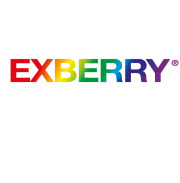News
Ready meals revisited: Combining health and convenience
8 May 2019The European ready meals market faces several challenges as consumers increasingly shun processed foods, but a growing appetite for convenience means there are still opportunities for manufacturers – if they can find the right positioning.
According to Euromonitor International, ready meals are subject to intense price battles in developed markets, but some manufacturers are finding success with organic, free from and vegetarian ranges, which are outperforming overall ready meal sales in both Western Europe and the United States.

The UK has one of the largest ready meals markets in Europe, and the category is among those the government has called on to cut calories by 20%, further influencing manufacturers’ ingredient choices. The government has suggested the target could be reached through a variety of measures, including reformulation, reducing portion sizes, and promoting lower calorie products. Apart from cutting fat- and calorie-rich ingredients, increasing the proportion of vegetables in ready meals is one potential approach – and one that chimes with the broader trend toward meat reduction and more flexitarian eating.
However, fresh ingredients like vegetables present specific challenges in ready meals, which tend to require a shelf life of at least eight weeks.
For suppliers, a major focus is on meeting the need for clean label ingredients that retain their fresh characteristics while also providing as long a shelf life as possible, often using packaging and processing technologies to preserve their taste, nutrition and appearance. As well as for vegetables, long preservation is also an issue for other natural materials like fruits, herbs, meat and seafood – but many companies have found relatively mild ways of processing such ingredients.
Scelta Mushrooms, for example, supplies a range of preserved mushrooms for use in ready meals and other applications with a shelf life of up to two years, while Diana Foods is among those providing ingredients like fruits, vegetables and meat that have been processed into dehydrated or quick frozen flakes, pieces, powders and granules for use in ready meals.
Natural colours and colouring foods could also have an important role to play, as many preservation methods used to keep foods safe for the weeks or months required in the category lead to faded-looking colours. Colouring foods specialist GNT, for example, emphasises that food colours are an important indicator of freshness, and must meet consumer expectations. It says colourings from fruits, vegetables and edible plants provide a label-friendly solution.
Meanwhile, as more consumers have turned away from foods they consider overly processed, frozen ready meals have experienced a resurgence, according to market research firm Magid. Although freezing is clearly a form of processing, consumers have become increasingly aware of the benefits of frozen foods, for preserving nutritional value, as well as a way to reduce food wastage. Magid suggests health-conscious younger consumers are particularly interested in frozen ready meals, as they tend to be quick, easy and relatively healthy compared to alternative options – features that young consumers are known to value.
When it comes to future growth in frozen and prepared meals, Mintel has identified naturalness, simplicity and plant-based foods as important drivers. It says demand for vegetable servings is particularly high in Poland, where nearly nine in ten ready meal consumers say they look for a full serving of vegetables, while a significant majority of French, German, Italian and Spanish consumers also consider vegetable content an important purchase factor.


